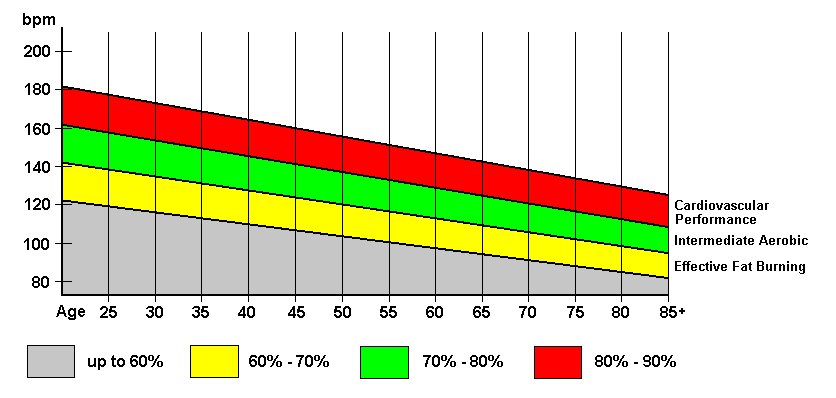No
more guesswork - The intensity of your workouts is of the highest importance:
too low an intensity and you will get little benefit, too high an intensity and
you will overtrain, risking possible injury and illness. To put it simply, the
faster you run, the more oxygen is required by the muscles and the faster the
heart has to beat to provide the muscles with enough oxygen. For this reason,
heart rate is the best method of evaluating how hard you are working. This
training guide will use heart rate zones to set exercise intensity, improve the
efficiency of training and prevent both overtraining and under training.

Maximum Heart Rate
The Maximum Heart Rate is determined by the participants
age. This is the level that must never be exceeded. Never
exercise even near the maximum heart rate. Drugs, illness,
coffee, and alcohol can push the heart rate to dangerous
levels. The maximum heart rate is determined as follows:
Maximum HR = 220 - Age
Resting Heart Rate
Heart rate is an accurate measure of your performance
during the aerobic session. However, it is not the only
indicator of your fitness level. The Resting Heart Rate (RHR)
is measured for three consecutive mornings before you get
out of bed. Keep a watch or clock with a second hand to
count the beats and count for 10 seconds then multiply the
total 10 second count by 6. The number you get is your
resting heart rate. As your cardiovascular system becomes
stronger, the resting heart rate will become lower.
Target Heart Rate
The Target Heart Rate is the heart rate range that the
participant should try to maintain during exercise. The
participants fitness level determines which of the three
intensity levels Beginner, Intermediate or Advanced should
be maintained. For each category, approximately 4 to 6
weeks should pass before moving to the next level
assuming at least three aerobic sessions a week.